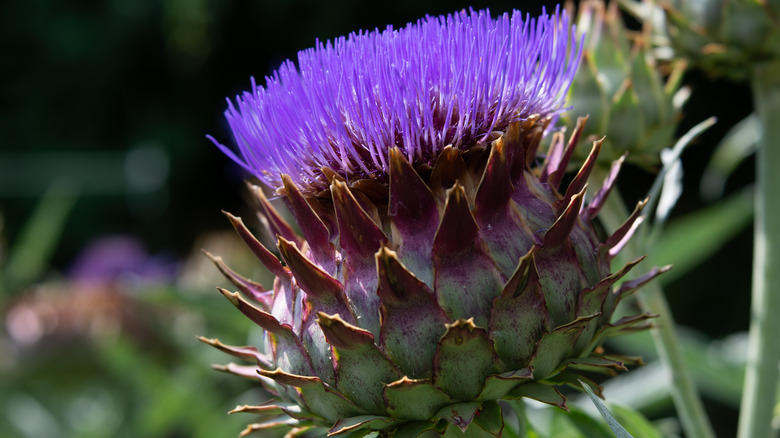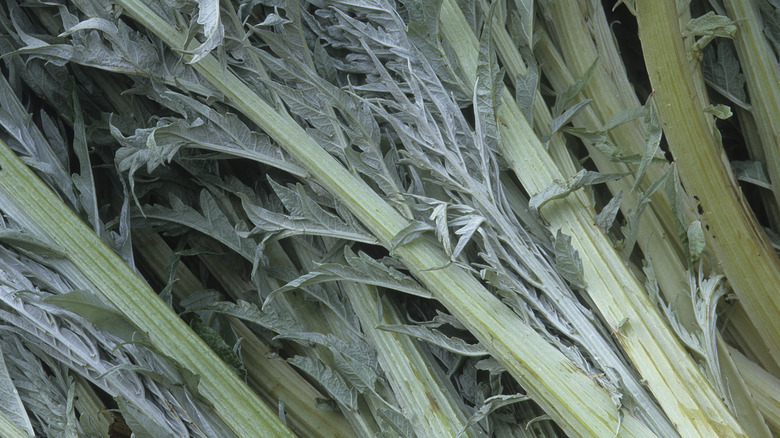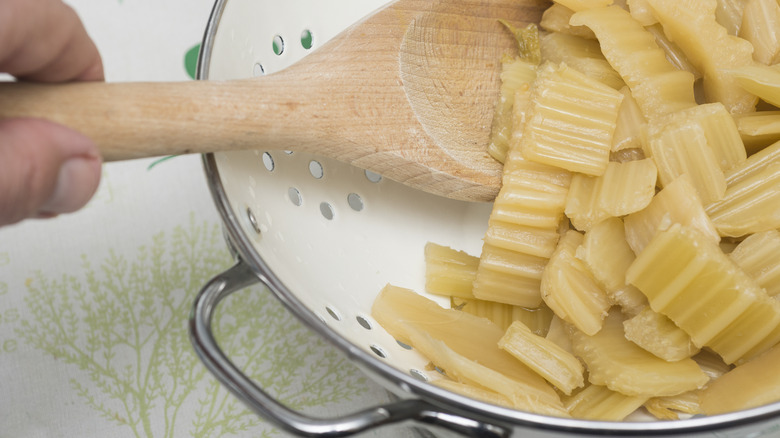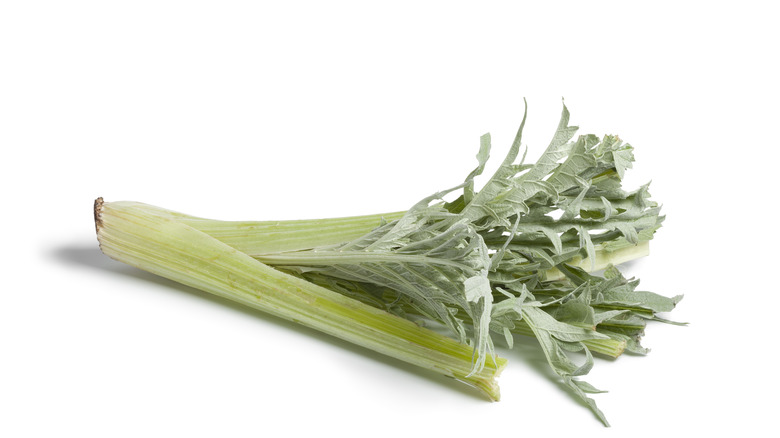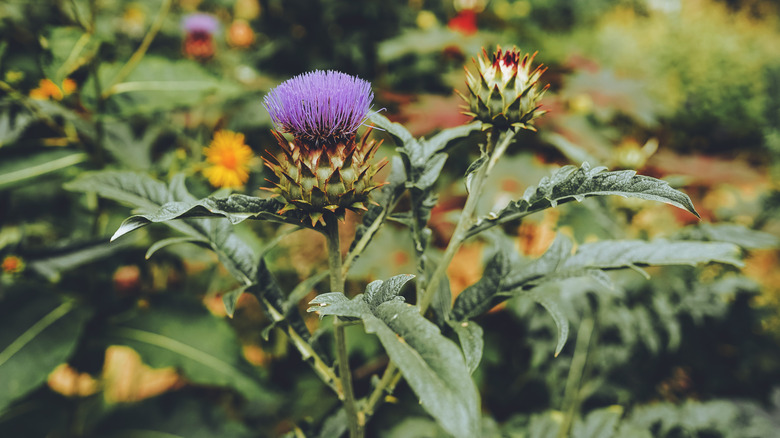What Are Cardoons And What's The Best Way To Cook With Them?
At first, chefs and home cooks may be stumped by cardoons, an uncommon and unique-looking vegetable. These plants have a flowering, thistle-like top and spiny stalks and can grow up to three feet in height. It wouldn't be hard to imagine them used as decorations on the set of a sci-fi movie. Cardoons (Cynara cardunculus) are part of the Asteraceae family, which also includes such flowers as dahlias and marigolds and other vegetables like artichokes, endive, and salsify. Thistles and dandelions are also part of Asteraceae.
Cardoons, also known as globe artichokes and artichoke thistle among other terms, date back hundreds of years. They were first cultivated in North Africa and southern Europe. Cardoons were considered a luxury food in the days of ancient Rome, and they have remained popular in Europe. These vegetables were introduced to the United States in the 1800s, but they have been overshadowed here by their more high-profile cousin –- the artichoke.
What do cardoons taste like?
Cardoons share a similar flavor to artichokes. Both vegetables have an earthy, nutty taste, but cardoons have a more pronounced bitterness than artichokes. And unlike artichokes, you actually eat the stalks of the cardoon plant. The stalks look a bit like celery and have strings in them as well. In its raw state, the plant's bitterness may be overpowering. Cooking cardoons brings out some of their natural sweetness.
You may even have tasted cardoons without even knowing it as the stamens from the plant's flowers can be used to replace animal rennet in the cheese-making process. Rennet is made up of the enzymes from a young animal's stomach, which are often taken from calves. These enzymes are employed in helping curdle milk to help make cheese. Using cardoon stamens allows cheese makers to create a fully vegetarian cheese product. This method dates back to the days of ancient Rome and remains popular with Spanish, Italian, and Portuguese cheese producers.
How to cook with cardoons
Cardoons are labor-intensive vegetables, and it takes a fair amount of work to get them ready to eat. First, peel the cardoon stalks –- you might want to wear gloves for this to protect yourself from the plant's spiky parts. You also want to remove as many of the strings from the stalks as possible. Then it's recommended that the stems be soaked in cold water with a bit of lemon juice to prevent the vegetable from browning. Some like to eat them raw, serving them as part of a crudité platter alongside a dip. But others say that uncooked cardoons taste too bitter to be eaten that way.
Many recipes call for cardoons to be parboiled before cooking them further. This step helps decrease the vegetable's overall bitterness. Cardoons are incredibly versatile, and they taste great sautéed, boiled, or coated in batter and fried. In Italy, cooked cardoons are sometimes served as an appetizer with bagna cauda, a garlic-anchovy sauce. This vegetable also gets a starring role in several soup recipes.
Where to buy cardoons
While artichokes can be easily found, cardoons require some effort to locate. They are available year-round, but they may be easier to find during the traditional harvest time, which happens in the fall and winter. Farmers' markets and specialty stores are probably your best bet. Italian food shops are another good option as the cardoon is more popular in Europe. You will usually see them sold in bunches. Expect to pay a bit more for cardoons than other vegetables because of their scarcity.
Cardoons can be stored in the refrigerator for about a week, but plan to use them soon after purchase. Older cardoons become tough and are harder to prepare. If you can't find fresh cardoons, several companies sell a prepared version. These cooked products will spare you all the hard work often associated with cardoons. They are often jarred in brine so they may taste slightly pickled. If you're really curious about cardoons and have a green thumb, you could always grow them yourself. Several companies sell cardoon seeds but cultivate them carefully. Cardoons take over an area quite quickly. In fact, these plants are considered an invasive species in California and other places.
Nutritional information about cardoons
Cardoons offer an impressive amount of nutrients and fiber for very few calories. A cup of raw cardoons comes in at only 30 calories, according to Nutrition Value. This serving also contains 2.9 grams of fiber along with 125 milligrams of calcium, 712 milligrams of potassium, and 1.3 milligrams of iron. Potassium supports muscle function and aids the body in maintaining proper blood pressure, per Harvard University's School of Public Health.
Cardoons were once believed to have restorative powers, according to Saveur. The vegetable has gained more interest in modern times for one of its chemical attributes. Cynarin, a compound found in cardoons, reportedly can help with digestion and lower cholesterol, per Mountain Herb Estate. It also supports liver health as well.
It's important to be aware that cardoons also have some naturally occurring sodium in them as well. It contains 303 milligrams of sodium per one-cup serving. Anyone watching their salt intake will want to keep this information in mind when eating cardoons.
